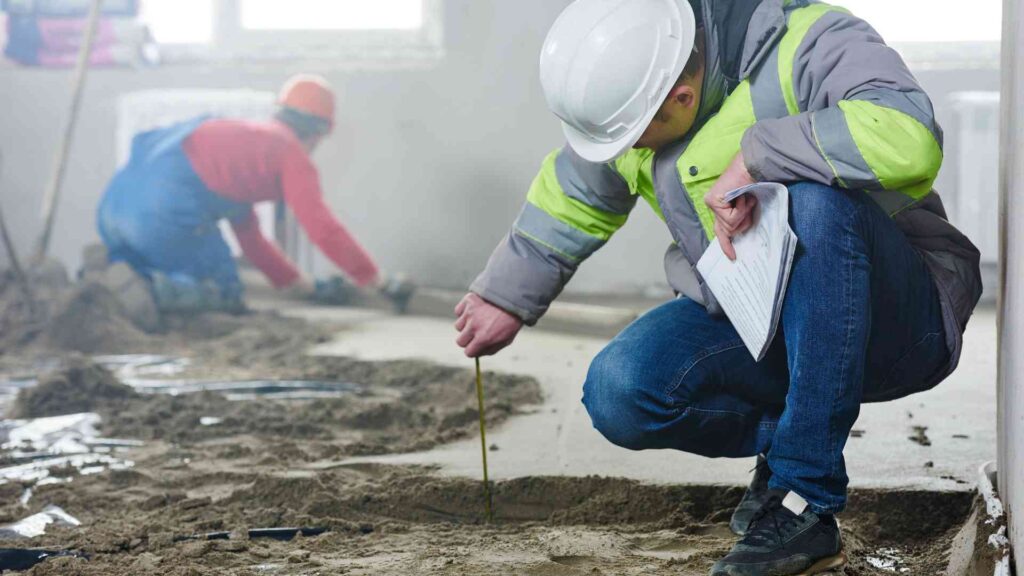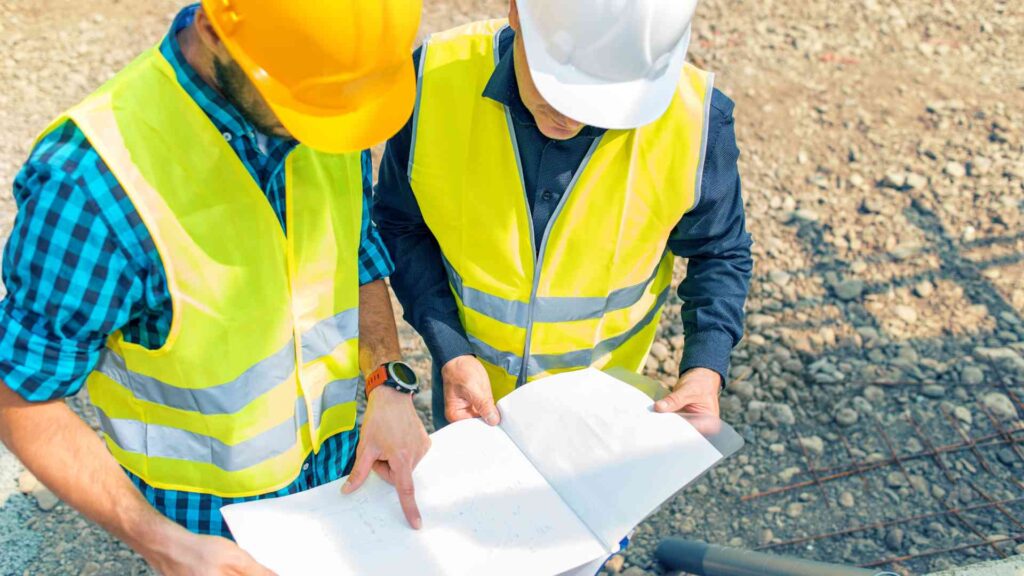Concrete is a widely used material in the construction industry due to its durability and strength. However, over time, even the most well-built concrete structures may develop cracks. These cracks not only compromise the integrity of the concrete but also pose safety hazards. In this article, we will explore the dos and don’ts of concrete crack repair to help you effectively address this common issue.
Understanding Concrete and Its Common Issues
Before we dive into the dos and don’ts of concrete crack repair, it is important to understand the nature of concrete and the causes of cracks. Concrete is a mixture of cement, sand, gravel, and water, which hardens over time to form a solid structure. Despite its strength, concrete is prone to cracking due to various factors.
Concrete is a versatile and widely used construction material. Its durability and strength make it ideal for a variety of applications, from building foundations to sidewalks and driveways. However, even with its impressive properties, concrete is not immune to damage.
One common cause of concrete cracking is shrinkage. As the concrete cures and the water evaporates, it undergoes a process called hydration. During hydration, the cement particles bind together, creating a solid matrix. However, as the water evaporates, the concrete shrinks, leading to internal stresses that can cause cracks to form.
Another factor that can contribute to concrete cracking is excessive loading or structural movement. When a concrete structure is subjected to heavy loads or experiences movement, such as settling or shifting of the ground beneath it, the stress on the concrete can exceed its capacity, resulting in cracks.
In addition to shrinkage and excessive loading, improper installation practices can also lead to concrete cracks. If the concrete is not properly mixed, poured, or cured, it may be more susceptible to cracking. Similarly, inadequate reinforcement, such as insufficient steel reinforcement or the absence of expansion joints, can also contribute to cracking.
Furthermore, the quality of the materials used in concrete construction plays a significant role in its durability. Using low-quality cement, sand, gravel, or water can compromise the integrity of the concrete, making it more prone to cracking.
The Impact of Weather on Concrete Durability
Weather conditions can also have a significant impact on the durability of concrete. Extreme temperature fluctuations, especially in regions with hot summers and cold winters, can cause the concrete to expand and contract, leading to cracks. This is known as thermal cracking.
Another weather-related factor that can affect concrete is freeze-thaw cycles. In areas with freezing temperatures, moisture can penetrate the concrete’s pores. When this moisture freezes, it expands, exerting pressure on the concrete and potentially causing it to crack. When the ice melts, the concrete contracts, further exacerbating the cracks.
Moisture exposure is yet another weather-related issue that can weaken concrete. If water seeps into the concrete and remains trapped, it can lead to the corrosion of the reinforcement, which can compromise the structural integrity of the concrete and result in cracking.
Therefore, when evaluating the severity of concrete cracks and determining appropriate repair methods, it is crucial to consider the impact of weather conditions. Understanding the causes of concrete cracking and the influence of weather can help in implementing effective repair and preventive measures.
The Importance of Timely Concrete Crack Repair
Addressing concrete cracks promptly is crucial to prevent further damage and maintain the aesthetic appeal of the structure.
Concrete is a widely used construction material due to its durability and strength. However, over time, concrete can develop cracks due to various factors such as shrinkage, settlement, or heavy loads. These cracks, if left unattended, can lead to significant problems that can compromise the integrity of the structure.
Preventing Further Damage
Unrepaired cracks can allow water to penetrate the concrete, leading to additional problems such as corrosion of embedded reinforcement and further cracking. When water seeps into the cracks, it can reach the steel reinforcement within the concrete. This can result in the formation of rust, which not only weakens the reinforcement but also causes it to expand, exerting pressure on the surrounding concrete. As a result, the cracks can widen, compromising the structural stability of the entire system.
Moreover, water can also cause the concrete to deteriorate over time. When water freezes and expands within the cracks during colder months, it can cause the cracks to widen. This cycle of freezing and thawing can lead to the formation of larger cracks and even result in the disintegration of the concrete surface.
By addressing concrete cracks in a timely manner, you can prevent these issues from occurring. Repairing the cracks effectively seals them, preventing water from infiltrating the concrete and causing further damage. This proactive approach helps maintain the structural integrity of the concrete and extends the lifespan of the entire structure.
Maintaining Aesthetic Appeal
Cracked concrete not only compromises the structural integrity but also diminishes the visual appeal of the surface. Whether it’s a sidewalk, driveway, or a decorative concrete feature, cracks can significantly detract from the overall aesthetics of the structure.
When cracks are left unattended, they can accumulate dirt, debris, and even weeds. This can make the cracks more noticeable and give the impression of neglect or poor maintenance. Additionally, cracks can disrupt the smoothness and uniformity of the concrete surface, creating an unsightly and uneven appearance.
Repairing cracks in a timely manner ensures that the concrete maintains its aesthetic value and enhances the overall appearance of the structure. By filling the cracks and restoring the surface to its original condition, you can create a visually pleasing environment that leaves a positive impression on visitors and passersby.
Furthermore, timely concrete crack repair can also prevent the need for more extensive and costly repairs in the future. By addressing cracks early on, you can avoid the need for complete concrete replacement or major structural repairs, saving you time, money, and inconvenience.
In conclusion, addressing concrete cracks promptly is essential for preventing further damage and maintaining the aesthetic appeal of the structure. By taking a proactive approach to concrete crack repair, you can ensure the longevity and visual attractiveness of your concrete surfaces.
The Dos of Concrete Crack Repair
Now that we understand the importance of concrete crack repair, let’s explore the dos of the repair process to ensure effective and long-lasting results.
Properly Assessing the Damage
Before initiating any repair work, it is crucial to assess the extent of the damage. This involves identifying the type and size of the cracks, evaluating the underlying causes, and determining the appropriate repair method.
Choosing the Right Repair Materials
Selecting suitable repair materials is vital for achieving durable repairs. Depending on the nature and severity of the cracks, options may include epoxy, polyurethane, or cementitious repair products. It is important to follow manufacturer instructions and choose materials that are compatible with the existing concrete.
Following Correct Repair Procedures
Proper repair procedures are essential for successful concrete crack repair. This includes preparing the crack surface by cleaning and removing any loose debris, properly applying the repair material, and ensuring adequate curing time. Following the recommended repair techniques will help maximize the effectiveness and longevity of the repairs.
The Don’ts of Concrete Crack Repair
While there are essential steps to follow, it is equally important to avoid common mistakes that can compromise the quality of the repairs.
Avoiding Common Repair Mistakes
One common mistake is neglecting to fix small cracks, assuming they are insignificant. Over time, these small cracks can expand and cause more significant damage. It is crucial to address cracks promptly, regardless of their size.
Missteps in Selecting Repair Tools
Using inappropriate tools for the repair job can lead to subpar results. It is essential to use tools specifically designed for the repair task at hand, such as crack injection guns, trowels, or wire brushes. Using the wrong tools may hinder the effectiveness of the repair material and compromise the integrity of the fix.
Inadequate Preparation and Finishing
Thorough preparation and finishing are vital for a successful repair. Neglecting to clean the crack properly, failing to remove loose particles, or not smoothing the repaired area can affect the adhesion and overall appearance of the repair. Taking the time to prepare and finish the repair properly will ensure a long-lasting and aesthetically pleasing result.
Professional vs. DIY Concrete Crack Repair
While minor cracks can often be repaired using do-it-yourself methods, more extensive damage may require professional intervention. Understanding when to call a professional can help you make an informed decision.
When to Call a Professional
If you are unsure about the severity of the cracks or lack the necessary skills and tools, it is best to consult a professional. They have the expertise and experience to assess the damage accurately and recommend appropriate repair methods.
The Limitations of DIY Repair
While DIY repairs can be cost-effective for minor cracks, it is important to recognize their limitations. Complex or extensive damage may require specialized equipment and techniques that are best handled by professionals. Ignoring the limits of DIY repair can result in ineffective fixes and potential safety risks.
In conclusion, concrete crack repair is essential for maintaining the integrity and appearance of concrete structures. By understanding the causes of concrete cracking, following proper repair procedures, and avoiding common pitfalls, you can effectively address and prevent further damage. When in doubt, don’t hesitate to seek professional assistance to ensure long-lasting and successful concrete crack repairs.


